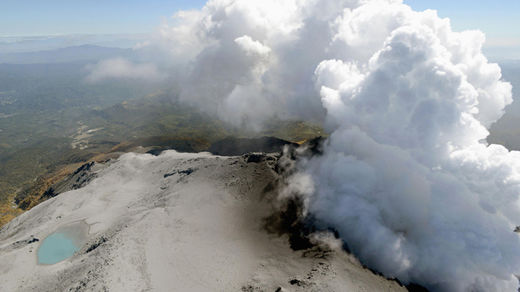
© AFP Photo/Yoshikazu TsunoSnow-covered Mount Fuji is seen from Tokyo, Japan, on February 16, 2014
Japan's massive 2011 earthquake may trigger more, and larger, volcanic eruptions over the next few decades, perhaps even that of Mount Fuji - but predicting them remains close to impossible, a volcano expert said on Friday.
The nation last month suffered its worst volcanic disaster in nearly 90 years when Mount Ontake, its second tallest active volcano at 3,067 meters (10,062 feet),
suddenly erupted, raining down ash and stone on hikers crowding the summit.
The eruption killed 56 people, exceeding the deaths in the 1980 eruption of Mount St Helens in the United States. Seven victims remain missing, and recovery efforts have been suspended until the spring.
Japan may well be moving into a period of increased volcanic activity touched off by the 9.0 magnitude earthquake of March 11, 2011, said Toshitsugu Fujii, a volcanologist and professor emeritus at the University of Tokyo.
"The 2011 quake convulsed all of underground Japan quite sharply, and due to that influence Japan's volcanoes may also become much more active," Fujii told reporters.
"It has been much too quiet here over the last century, so we can reasonably expect that there will be a number of large eruptions in the near future."













Comment: SOTT's been talking about methane outgassing for quite some time. Just a few results from a cursory search here on methane outgassing:
Arctic Ocean leaking methane faster than anticipated
Vast methane plumes discovered escaping from Arctic seafloor north of Siberia
New climate change threat: Arctic seabed releases millions of tons of methane into atmosphere